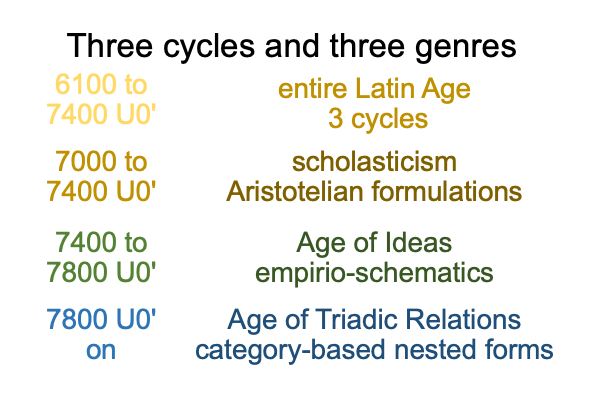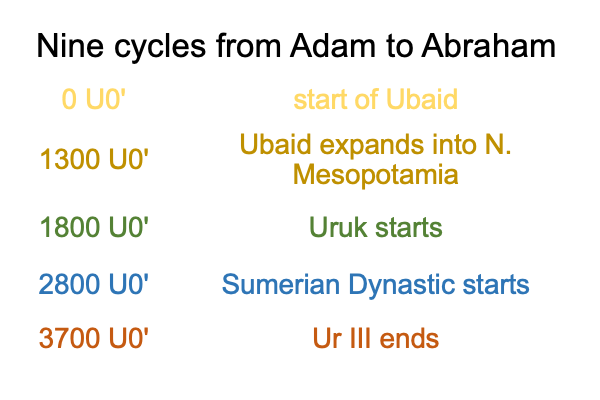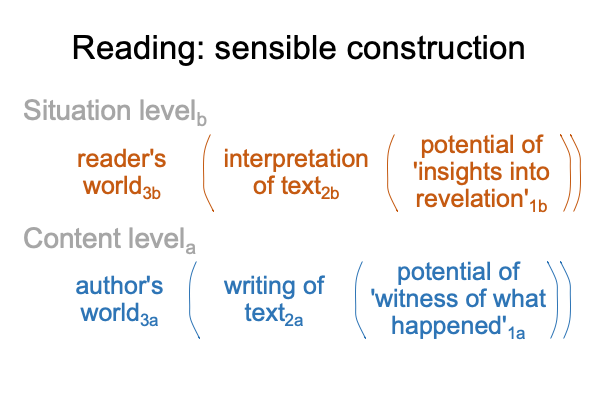Looking at the Book (2015) Genesis: History, Fiction or Neither? (Part 10 of 38)
0031 Does a debate over Biblical genres offer clues concerning the character of life during and after the start of the first singularity?
0032 For one, technically, the first singularity precedes history, even as it potentiates history.
0033 For two, how can anyone tell the history of an event that no one knows about?
The Ubaid practices speech-alone talk from the start. Plus, the consequences of practicing speech-alone talk are unfathomable. The semiotic qualities of speech-alone talk potentiate labor and social specialization, resulting in increasing wealth and power over the span of generations.
Who is going to figure that out?
Surely, the Ubaid is aware that other Neolithic cultures practice hand-speech talk. But, those are loser cultures. All the action is happening in the Ubaid. The other cultures are way behind. Plus, they intend to catch up. They drop the hand-talk component of their hand speech talk.
The change in semiosis between hand-speech and speech-alone is so dramatic that even these neighboring cultures forget the Lebenswelt that we evolved in. The tree of life disappears. The seeds of the tree of the knowledge of good and evil are sown in distant lands.
0034 For three, Gen 1-11 may be regarded as a witness from within the spontaneously differentiating and specializing Ubaid villages, as they develop into Uruk town-chiefdoms, then into Sumerian city-states.



